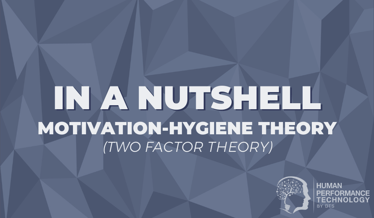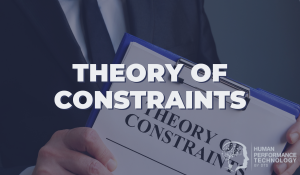In a Nutshell: Theory X & Theory Y
Theory X and Theory Y are basic (and opposing) attitudes of management held towards employees. They are general assumptions, in the sense that they are based on the typical worker, rather than all workers.
Neither Theory X or Theory Y can be said to be “wrong” or “right,” and a manager may prefer one primarily under a given set of conditions, run both simultaneously, or alternate between the two at different times, depending on a wide range of workplace variables.For example, Theory X would tend to be thought more effective in a military context than in a white collar “creative worker” context. In general, however, McGregor views Theory X as an obsolete operating framework and “so long as the assumptions of Theory X continue to influence managerial strategy, we will fail to discover, let alone utilise, the potentialities of the average human being.”
Theory X and Theory Y were proposed by Douglas McGregor in his book "The Human Side of Enterprise" (1960). McGregor observed that certain assumptions about human nature were implicit in all management decisions and affected they way workers were treated, and how in turn this treatment impacted culture, retention, engagement and performance. However, because these assumptions were so basic and deeply embedded in organisational life, managers often didn’t realise they were just that — assumptions. He compares the “psychological environment” of industrial management to fish discovering water last.
McGregor’s development of Theory X and Theory Y was heavily influenced by motivational theory, particularly the work of Abraham Maslow and his hierarchy of needs. As Maslow pointed out, once lower-level needs are satisfied they no longer become motivating. Yet, managers would tend to focus on external motivation (carrot and stick) and rely on fringe benefits (bonus, overtime pay, vacations, health benefits, profit sharing) as the primary method of motivating employees. McGregor, like many other motivational researchers before and since, notes the rift between external motivation and intrinsic motivation, and the general superiority of the latter for unlocking human potential and achieving long-lasting individual satisfaction. Despite ostensibly being interested in training and development, the basic conception of managing human resources, McGregor concludes, tends to view the average human being as an adolescent. The “principle of integration” demands that both the organisation’s and the individual’s need to be recognised. The goal of Theory Y is to encourage this integration, “to create a situation in which a subordinate can achieve his own goals best by directing his efforts toward the objectives of the enterprise.” The goal of Theory X is to produce well-behaved children.
Theory X assumes people:
- are basically lazy and irresponsible by nature
- prefer to be directed rather than self-directed
- are not especially ambitious
- seek security above all
- dislike work and will attempt to avoid it where possible
- resent management and will do the bare minimum to get by
And therefore managers:
- need to tightly monitor and control human resources
- watch employees carefully for mistakes
- must use coercion and manipulation
- provide carrot (incentive) and stick (punishment) to motivate action
- should employ an authoritarian management style
Theory Y assumes people:
- do not inherently dislike work
- are basically self-motivated and trustworthy
- under the right conditions want to work
- will use work to satisfy higher-level needs
- want to contribute to meaningful goals
- have unlimited creative potential
And therefore managers:
- Should use a participative and trusting management style
- coach employees
- understand they can unlock organisational growth through employee growth
- see humans as valuable assets
- achieve win-win outcomes by improving employee relationships

Theo Winter
Client Services Manager, Writer & Researcher. Theo is one of the youngest professionals in the world to earn an accreditation in TTI Success Insight's suite of psychometric assessments. For more than a decade, he worked with hundreds of HR, L&D and OD professionals and consultants to improve engagement, performance and emotional intelligence of leaders and their teams. He authored the book "40 Must-Know Business Models for People Leaders."



We Would Like to Hear From You (0 Comments)